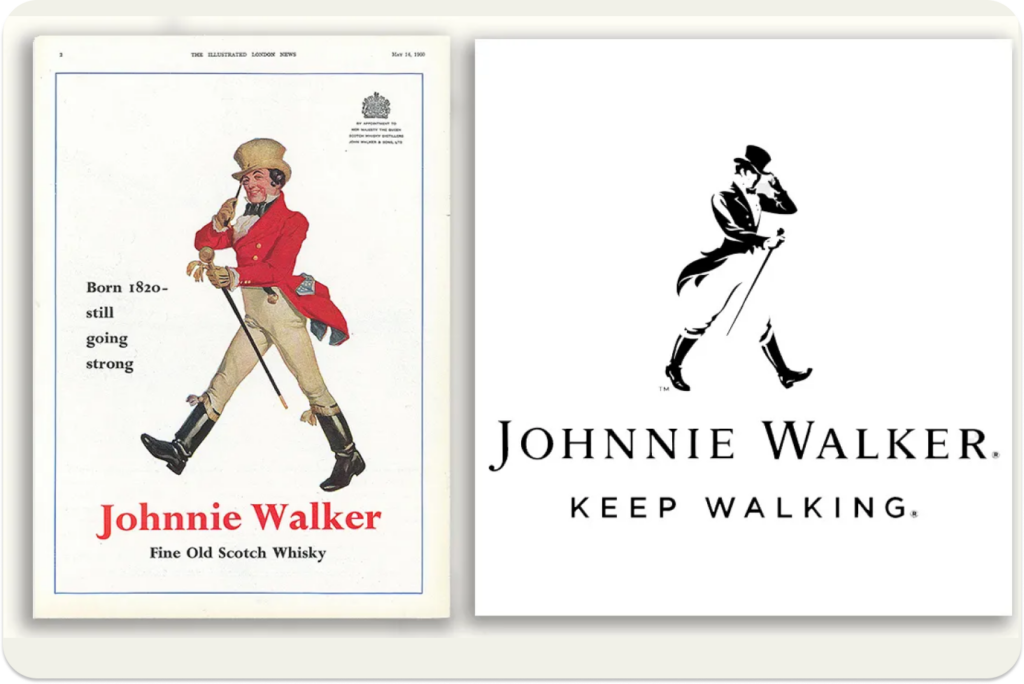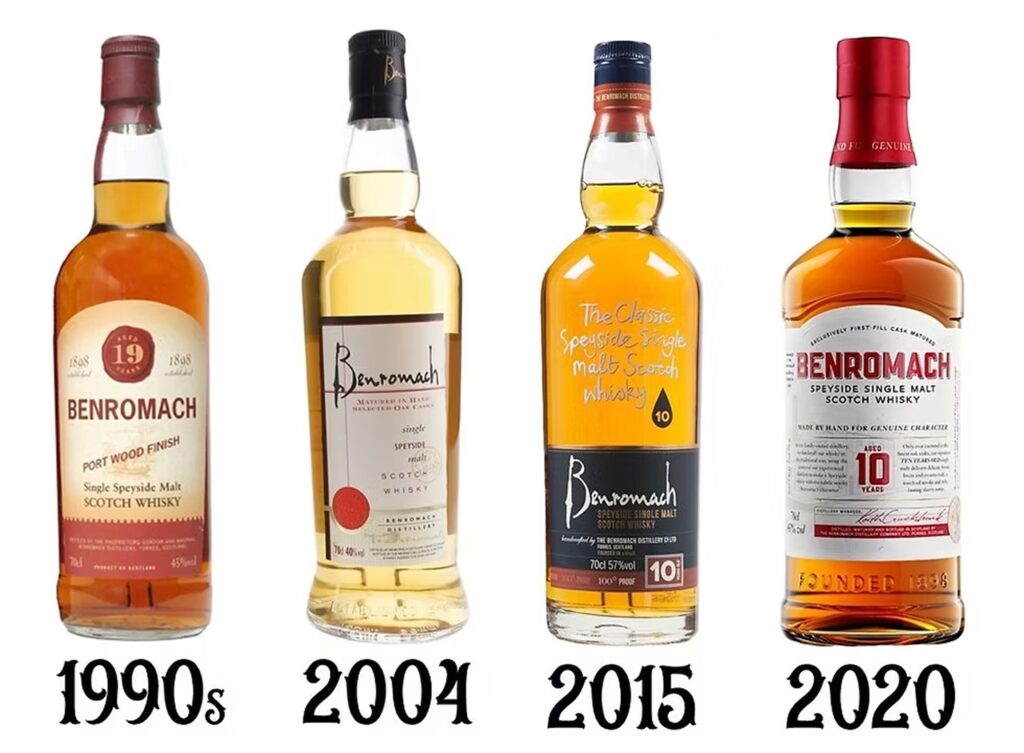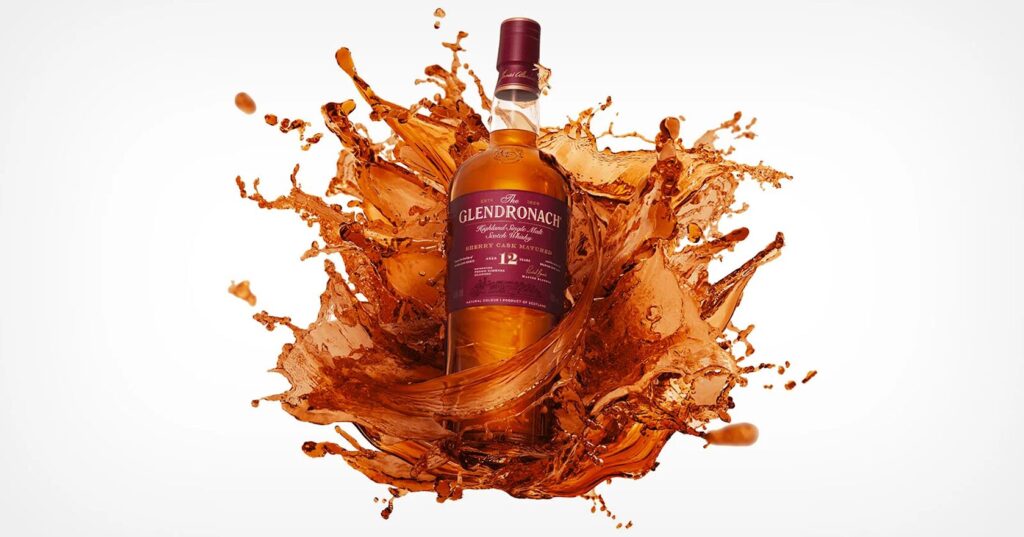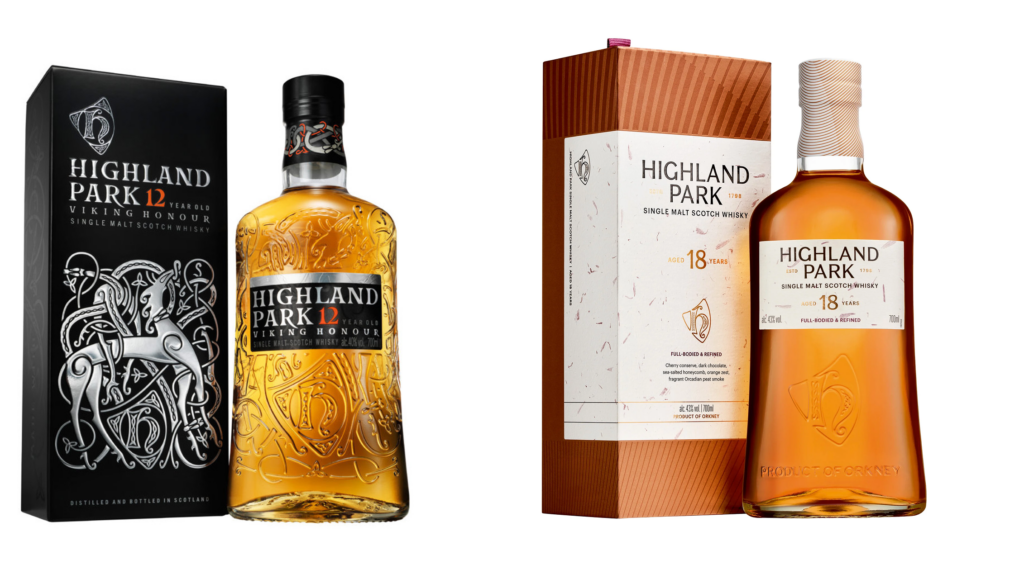
If you’ve been following the whisky industry closely, you’ve probably noticed that rebranding happens fairly often. That’s why we continue seeing “old bottles” appearing alongside newer designs on the market. Recently, many rising whisky distilleries have undergone brand renewals to stay competitive. As the whisky market becomes increasingly crowded and consumer preferences diversify, refreshing existing brand images and identities has become almost inevitable.
As a longtime whisky lover, I understand the frustration. It feels unnecessary and puzzling why they keep changing bottle designs, but trust me, they’re not making these decisions lightly. Let’s explore why whisky brands keep updating their bottles and refreshing their brands – there’s careful strategy behind what might seem like needless change.
Why Rebranding is Necessary (Marketing Elements Common Across Industries)
Rebranding isn’t simply about changing a product’s appearance or logo (though it can be that minimal). It’s a process of reconstructing the brand’s overall identity and how it communicates with consumers. Like companies in other industries, whisky brands undertake rebranding with several goals in mind.
1. Responding to Market Changes
With the emergence of global markets and diverse consumer groups, strategies to reach new consumers are necessary rather than remaining fixed on traditional images and established consumer bases. (Kotler and Keller’s “Marketing Management” emphasizes the need for brand repositioning in changing consumer trends and competitive situations.) Market changes particularly target younger consumers entering the market. The goal is to present a fresh image, as people are naturally drawn to new things and design trends evolve.
2. Redefining Brand Value
While a company’s heritage and history are valuable, there’s a need to balance tradition and innovation to appeal to modern consumers. (According to Harvard Business Review’s 2022 “The Art of Brand Renewal,” traditional brands use rebranding to achieve sustainable growth in the modern market.)
3. Strengthening Competitiveness
As competition in the global whisky market intensifies, existing brand images may no longer feel fresh to consumers. Rebranding is one means of securing a competitive advantage (though not necessarily guaranteed).
4. Strategic Approach
By creating a distinction between old branding and renewed branding, companies can strategically enhance the value of the original pre-renewal brand rather than focusing exclusively on the renewed brand. (This often leads to increased value for old bottles.)
5. Changes Due to Unavoidable Circumstances
This seems like the most passive form of rebranding, but it can also be used strategically. A prime example is changing the taste of the product or adjusting the options that go into the existing product during rebranding. Sometimes these changes happen without rebranding, but often companies make all changes at once to emphasize the transformation. (Did Glen Allachie 15 year old really improve in taste after rebranding?)
Pros and Cons of Rebranding
While the necessity of rebranding is emerging, it doesn’t mean it’s “absolutely” required. It offers several benefits but also presents risks that should be carefully considered.
| PRO | CON |
|---|---|
| Provides a fresh image: Gives consumers a new impression | Risk of losing existing customers: Long-time fans may resist change |
| Strengthens market competitiveness: Expands market share by differentiating from competitors | Brand identity confusion: Radical changes may dilute the core identity of the brand |
| Attracts new customers: Effectively appeals to younger consumers and new markets | Burden of renewal costs: Significant expenses for design, marketing, and |
| Strategic adaptation to the digital era: Optimized for social media and digital marketing | Lack of consistency: Maintaining message consistency after renewal may be challenging |
Notable Rebranding Examples (Recent)
1. BenRomach Distillery



In my personal opinion, BenRomach is a prime example of successful rebranding. While some might prefer the previous brand image, the new look is much younger, more vibrant, and properly incorporates the distillery’s identity colors. It particularly highlights their focus on first-fill casks. (This strategy was likely implemented when transitioning from Billy Walker to Rachel Barrie. Glen Allachie, GlenDronach, and Glenglassaugh all underwent rebranding at similar junctures.)
2. Laphroaig Distillery

You might wonder if Laphroaig has actually undergone recent rebranding, but among the distilleries mentioned, they implemented the most conservative renewal. The result respects and maintains their heritage. In my personal opinion, though it might seem insignificant, I would rate it as a very fresh and well-organized rebranding.
3. GlenDronach Distillery


GlenDronach didn’t change their logo font, but they did inject a younger sensibility into their traditional heritage. (They maintained the same color scheme but incorporated pastel tones and added whitespace. The packaging also seems to have changed from tubes to paper boxes.) We’ll need to monitor future sales to determine whether this rebranding has been successful.
4. Highland Park Distillery

For me, Highland Park’s rebranding has been somewhat disappointing. (An interesting side note about Highland Park is that despite its name, the distillery isn’t actually located in the Highlands but in Orkney.) They’ve pivoted away from their powerful Scottish-Viking spiritual identity toward something more subdued and mainstream—almost “vanilla” in character, reminiscent of a creamy vanilla latte rather than their former bold positioning. While this could be considered an innovative and daring rebranding strategy, we’ll need to wait for market results to fully evaluate its success, as the rebranding was implemented relatively recently.
Rebranding: An Inevitable Strategy Across Generations

Rebranding may be an inevitable strategy for brands that survive across generations. It involves not just changing fonts, designs, or colors, but also updating websites, renovating distilleries, revamping distillery tours, strengthening digital channels like social media, and improving storytelling. (The websites of the example distilleries have changed from their previous versions.)
These strategies play a significant role in maintaining traditional images while attracting new consumer segments. As seen in the examples above, balancing tradition and modernity can serve as a next step forward. This is necessary to continuously appeal to new consumers.
While rebranding clearly involves significant cost burdens and potential backlash from existing customers, successful renewal can be achieved through detailed market research, strategic planning, and incorporating consumer feedback (though actually implementing feedback is genuinely challenging).
It will be worth watching how whisky distillery brands continue to innovate while preserving their traditions.
